Author’s note: the following review of the book Mismatch: How Affirmative Action Hurts Students Its Intended to Help and Why Universities Won’t Admit It by Richard H Sander and Stuart Taylor, Jr. was commissioned by Leon Wieseltier of the New Republic on September 10, 2012. It was submitted on January 30, 2013. No editorial comment having been received to date, I am posting it on the Brookings web site.
The Supreme Court decision in Brown versus Board of Education was a watershed event in several respects. It crowned a lengthy legal campaign to overthrow segregation in public schools. It rapidly widened into a multi-front campaign to assure that African Americans, other minorities, and women would not be excluded from any important aspect of American life. And it invoked social science in support of a fundamental reinterpretation of the Constitution.
Following Brown, it soon became clear that removing legal barriers was not enough to end the legacy of discrimination. Lyndon Johnson’s 1965 speech at Howard University stated bluntly that “We seek not just freedom of opportunity. We seek not just legal equity but human ability, not just equality as a right and a theory but equality as a fact and equality as a result.”
To counter the effects of past discrimination, Johnson said, it is necessary not just to remove barriers but also to offer help. Some assistance was procedural. Selective colleges, universities, and graduate schools began for the first time to recruit minorities actively and to mentor them. Other assistance was substantive, such as making race, sex, or national origin a ‘plus factor’ for jobs, contracts, and college admission. Programs of this sort immediately raised knotty conundrums for law, ethics, and social science. Were they constitutional? Were they fair? Did they work?
The legal problem was obvious. The 14th amendment states: “No State shall…deny to any person within its jurisdiction the equal protection of the laws.” Title VI of the Civil Rights Act of 1964 prohibits discrimination on the basis of race, color, and national origin in programs and activities receiving federal financial assistance. Title VII of the Civil Rights Act flatly bars consideration of race in hiring and promotion decisions. Many universities are state chartered and supported. Private and public institutions of higher learning receive federal contracts. The constitution and civil rights laws make no exception for discrimination practiced to redress past injustices.
Ethical issues are also inescapable. Giving African Americans or Hispanics a special break does not increase the number of jobs or slots in university classes. Giving them an edge means pushing others back in the queue. Many of those ‘others’ never personally did anything wrong. If giving such edges to past or present victims of discrimination was accepted, how large an edge was it fair to give and for how long?
In its earliest phases, affirmative action clearly helped its intended beneficiaries. In 1933 when Harold Ickes and his two lieutenants, Clark Foreman and Robert Weaver—later the first black cabinet officer under president Johnson—required that blacks be hired to help build public housing, there could be little doubt that African Americans benefitted from their action. When Richard Nixon’s Secretary of Labor, George Shultz, commented about discrimination in the building industry: “We found a quota system; it was there; it was zero,” there could be no doubt that moving from zero would help those who had been excluded. The nation was so far from the goal of fair treatment of minorities and women that possible conflicts with other objectives seemed remote. But when selective colleges and universities began to admit minority students with comparatively weak academic credentials, many of whom got poor grades and dropped out at distressing rates, a new question arose…did race preferences, at least in higher education, really help those they were intended to help?
Research on the impact of preferential admissions in higher education and litigation over its constitutionality ran on parallel tracks.
The policy of boosting enrollments at selective universities and colleges from what came to be called ‘under-represented minorities’ developed rapidly during the 1960s and 1970s. It coincided with efforts by those institutions to become genuine meritocracies. Although prestigious undergraduate and graduate programs had always favored the academically talented, they also held many slots for the offspring of previous graduates and generous donors. Athletic or artistic skills helped too, of course. Discrimination in admissions was routine, primarily to hold down the numbers of bright kids with the “wrong” religion or cultural background.
Then in the 1960s and 1970s, the weight attached to good grades and high test scores on entrance exams soared. Bragging rights came to those colleges whose entering classes had the highest scores on college entrance examinations. Some slots were still held for the progeny of previous graduates, the well-connected, the financially generous, and the artistically talented or athletically skilled. But academic standards for admission rose at both the undergraduate and graduate level. In simple terms, the ‘good’ schools, more than ever before, became academically excellent.
As far back as the 1970s concern grew that the policy of giving an edge to African Americans, Hispanics, and other members of under-represented minorities, however well-intentioned, might be doing more harm than good. Giving applicants from these groups an edge in admissions necessarily meant that, on the average, they came with weaker academic credentials than did whites. To be sure, selective schools offered matriculants big advantages—enriched environments, good connections, and, to those who graduated, a valued credential. On the other hand, students without adequate preparation might find the work just too difficult. As a result, they might even learn less than they would at less selective institutions. They might suffer stigma or be marked as second-raters or shamed as beneficiaries of unearned advantages, as many critics of affirmative action claim and some supporters fear. The result would be low-academic performance, high drop-out rates, wasted time and money, and, in extreme cases, blighted lives. The risk of these adverse effects would be larger the greater the gap between the student’s preparation and the norm at the institution they attended. This, in brief, was known as the mismatch hypothesis.
Determining whether a mismatch effect actually exists is extremely difficult. Even if admissions were race blind and even if there were no mismatch effect whatsoever, African Americans and Hispanics admitted to selective colleges and universities would predictably have lower grades and graduate a lower rates than do whites. This expectation is in no manner racist. It follows directly from two indisputable facts. African Americans and Hispanics applying to college have lower test scores and high-school grades on the average than do whites; and test scores and grades both are predictive of academic performance.
A hypothetical example illustrates how these two facts will produce different success rates for various groups. Imagine that colleges use an academic index for selecting students. The index can take on three values: 1 (high), 2 (medium), or 3 (low). Those with a higher academic index do better on the average in college than those with a lower score. Imagine also that out of every 100 whites, 35 score 1, and 35 score 2, and that out of every 100 African Americans and Hispanics 10 score 1 and 50 score 2. Selective schools admit only those who score 1 or 2, and they do so in a race-blind manner. Half of whites but only one-sixth of African Americans and Hispanics score 1. Those who score 1 do better in college than those who score 2. It follows that whites will do better in college on the average than will African Americans or Hispanics. This conclusion would not follow if tests and grades under-predicted performance of minorities relative to that of whites. But repeated studies have shown that tests and grades do not under-predict performance of African Americans and Hispanics.
The observation that African Americans and Hispanics who enroll at selective universities have lower qualifications for admission than do whites should therefore come as no surprise. Affirmative action adds to the difference between test scores and grades of entering students. But gaps would exist even if there were no affirmative action, and whether or not mismatch exists.
So, the challenge…how can one tell from the observation that African Americans and Hispanics do less well in college than do whites at selective schools whether this gap results from mechanical reasons of the sort just described or from harm inflicted through mismatch?
Simply comparing grades and graduation rates of various groups is not enough. The undeniable fact that students from under-represented minorities get poorer grades and drop out more often than white students do proves nothing about whether affirmative action helps or hurts its intended beneficiaries. One could go further and measure whether students at selective institutions do better or worse than do students with similar test scores and grades at other colleges and universities.
That is just what Derek Bok and William Bowen, former presidents of Harvard and Princeton, respectively, did in their evocatively titled book, The Shape of the River. This study, published in 1998, drew on a rich data set developed with the support of the Mellon Foundation, which Bowen then headed. The survey reported on a large data set—College and Beyond—reporting the college experiences, graduation rates, and subsequent earnings of 93,660 students who graduated from thirty-four select universities and colleges in 1951, 1976, and 1989. Using statistical techniques that controlled for the expected influence of high-school grades, pre-college admission tests, race, and certain other characteristics, the authors found that African-American students who attended elite universities did as well as or better than African-American student who attended less elite institutions. The authors reported that they found no evidence to support the mismatch hypothesis.
The Bok-Bowen study was highly influential. The authors are highly respected. The survey was large. The information it contained was broad and detailed. Even so, the survey data were not ideally suited to test the effects of affirmative action. The earliest surveyed cohort attended college before affirmative action was much practiced and it is not clear to what extent that cohort drove the results. The data came mostly from highly selective institutions. Furthermore, because the data have not been freely available, few scholars could check the Bok-Bowen findings or do additional analysis. The importance of making data available so that other scholars may try to replicate results and identify errors hardly needs emphasis in light of recent controversies regarding the impact of government debt on economic growth.
Bowen and other co-authors revisited the question of how college affects students in 2009 with a new study, Crossing the Finish Line, based on an even larger survey. This study reported on the experiences of 124,522 freshmen who began college in 1999 at one of fifty-seven four-year public universities. These institutions were generally less selective than those included in the College and Beyond survey. Bowen reported some startling results. Regardless of the quality of the high schools that students attended, their grades predicted college performance far better than did standardized tests. The 2009 study also confirmed the major finding of The Shape of the River—that after controlling for high-school grades, test scores, race, and socio-economic status, students were more likely to graduate from more selective than from less selective universities. Once again, Bowen and his co-authors found no evidence to support the mismatch—what they called the ‘over-match’—hypothesis. Students are well-advised, they said, to enroll in the most selective institution that will accept them.
Critics questioned whether the Bok-Bowen studies provided support for affirmative action. Invoking considerations of fairness, Stephen and Abigail Thernstrom noted that high graduation rates from elite institutions reflected not only the high qualifications of enrollees, but the high expectations for graduation at them. Besides, they emphasized, giving a race- or ethnicity-based edge to some necessarily involves a race- or ethnicity-based handicap for others. One of those groups with a race-based handicap, they noted, are Asians, whose academic credentials on the average outshine those of whites and who suffered much discrimination in American history.
Others argued that ordinary survey data are inherently inadequate to test the mismatch hypothesis. No survey can measure all educationally-relevant student characteristics. Specifically, surveys cannot measure aspirations or mental toughness, which are relevant to educational outcome and may be correlated with the schools students attend. Many social scientists argue that the best way, and sometimes the only adequate way, to test the effect of an intervention is the randomized experiment. Such methods are routine in medical and agricultural research, but they are not normally available to those testing the effects of affirmative action. Students cannot be randomly assigned to colleges. And, even if they could be, the very act would color the results. Normally, analysts are stuck with survey data. They can do no more than control statistically for every influence they can measure and hope that omitted factors are not very important.
From the earliest years of affirmative action, those denied admission to schools that gave minorities a race-based or ethnicity-based edge have challenged the practice in court. In 1978, the Supreme Court ruled in The Regents of the University of California v. Bakke that the constitution barred the university from setting aside a fixed number of slots in its medical school class for under-represented minorities. But, universities could use race as a ‘plus’ factor in pursuit of ‘diversity,’ which, the Court said, is a legitimate educational goal. To this day, however, the Court has not defined exactly what diversity is or how one would know if it had been achieved.
Breaking with Bakke, the federal Circuit Court serving Louisiana, Texas, and Mississippi ruled in 1995 in Hopwood v. Texas that the University of Texas Law School could not use race as a factor in admissions. The case never got to the Supreme Court, however, because Texas dropped the challenged admissions practices.
Seven years later, the Supreme Court heard a pair of challenges to admission practices at the University of Michigan. For undergraduate admissions, Michigan used a point scale based on grades, test scores, and other factors. One hundred points assured admission. Under-represented minorities received 20 points automatically. In Gratz v. Bollinger, by a 5-4 margin, the Court reaffirmed that the pursuit of diversity is a legitimate goal, but it ruled that Michigan’s procedure was not ‘narrowly tailored,’ did not in general treat each applicant individually, resembled a quota system, which the Court had disallowed in Bakke, and was therefore unacceptable.
At the same time, also by a 5-4 vote, the Court upheld a race-conscious admission policy by the Michigan Law School. In Grutter v. Bollinger, the court said that the use of race was acceptable because the law school considered many factors and did so on an individual basis. The swing vote in both cases and author of the opinion of the Court was the now-retired Justice Sandra Day O’Connor, who has been succeeded by Justice Samuel Alito, widely thought to be less sympathetic than O’Connor to affirmative action.
The legal history is marked by chaotic disagreement. Not only has the court been divided, but the majorities have disagreed in the reasoning that has led to their judgments. For strong minded, independent jurists to reach a common position by different reasoning is not unusual. But the opinions reflect unresolvable internal conflicts. The Constitution guarantees equal protection, irrespective of race, national origin, sex, and age. Yet, American history is redolent of despicable violations of those principles. When, at last, Congress and private groups began to take steps to counter the legacy of discrimination, the highest court has been willing to curb, but not bar, these measures—at least, not yet.
While the idea that the best qualified people should get jobs, the best proposal should win the contract, and the best students should be admitted to selective colleges commands widespread support, few people adhere rigidly to the principles of meritocracy. They understand that in many cases no clear or reliable metrics exist for measuring merit. Furthermore, once one acknowledges that colleges and universities may legitimately consider factors other than test scores and grades in determining which applicants should be admitted, it is inevitable that some students refused admission will be better qualified on academic grounds than those admitted.
The point made in virtually every legal brief by a litigant complaining of discrimination because an African American or Hispanic with lower test scores or a weaker academic record was admitted reflects a profound confusion—such a result is inescapable once other criteria for admission are allowed to influence results. And because race, musical talent, athletic skills, and other non-academic characteristics predict academic performance less well than do grades and test scores, it is likely that those admitted because of such ‘non-academic’ qualifications will perform less well, on the average, than those admitted for purely academic reasons. Their grades are likely to be lower and they are likely to graduate at lower rates than those with stronger grades and test scores. Other influences, such as compensatory programs for the ill-prepared, easy grading (for athletes), or enrollment in ‘gut’ courses can partly or fully offset such tendencies. But the tendency is basic.
The issue of whether affirmative action in education is constitutional has returned to the Supreme Court docket. On February 21, 2012 the Supreme Court agreed to hear arguments in the case of Fisher v. Texas. Oral arguments took place on October 10, 2012. Outside interest in the case has been intense. The court received 90 ‘friend of the court’ (amicus curiae) briefs from interested parties, including social scientists.
Following the Hopwood decision, Texas adopted a simple policy of admitting applicants in the top 10 percent of Texas high-school graduating classes. Although the top-10-percent formula sacrifices some academic selectivity, it is a transparently reasonable admissions policy for a state-chartered institution dependent on state funds for part of its budget. It does not explicitly involve race or ethnic origin, but de facto residential segregation guarantees that this formula will result in the admission of more African Americans and Latinos than if admissions were based on test scores. Since its adoption, this formula has accounted for 60 to 80 percent of undergraduate admissions to the University of Texas. Following the Grutter decision, which sanctioned admission policies that considered race in a narrowly targeted, individual manner, Texas instituted what it called a “holistic” process to govern other admissions. The holistic admissions procedure uses both an academic index, based on test scores and grades, and a personal achievement index based on a wide range of other factors including two essays, family background, activities in the community and elsewhere, and race.
Ms. Fisher, a white Texas high school graduate, was in the 12th percent of her class and therefore was not admitted on the 10 percent plan. Nor was she admitted through the alternative selection process. She was offered a place on a waiting list, which she refused. She challenged the constitutionality of the Texas admission policy, claiming that but for her race she would have been admitted and was thereby unconstitutionally denied equal protection under the law.
The briefs of the parties to the case focus on whether the use of race in the Texas formula does or does not qualify as ‘limited and individualized,’ as specified by Justice O’Connor in Grutter v. Bollinger. But the court may go further by limiting or overturning Grutter, and at least four justices are thought to be disposed to do so. Persuasive evidence that affirmative action harms those it is intended to help would buttress the ethical foundation for such a position. One of the amicus briefs, by UCLA law professor Richard Sander and legal journalist Stuart Taylor, argues just that. Their book, Mismatch: How Affirmative Action Hurts Students It’s Intended to Help, and Why Universities Won’t Admit It, is a lengthy and rich argument in support of this position. So significant is this indictment of affirmative action that another amicus brief, by a veritable Who’s Who of empirical social scientists is devoted to rebutting the Sander/Taylor brief. Social scientists submitted several other amicus briefs, some in support of Ms. Fisher’s appeal, some opposed.
Mismatch extends and elaborates an indictment of affirmative action first presented by Sander in 2004 in a Stanford Law Review article. That article provoked intense controversy, personal invective, and allegations of data suppression. Mismatch recounts this controversy in score-settling detail and is, thus, also a personal memoir and an expose of intellectual politics in the academy, as well as a layman’s guide to social science research on a tricky subject. Co-author Stuart Taylor comes to this tale with the background of having written Until Proven Innocent, a chilling and devastating expose of the way a rogue—and subsequently disbarred—district attorney railroaded Duke lacrosse players after a stripper falsely accused them of rape, and tells how Duke faculty members and administrators rushed to condemn the players despite abundant warning signs of prosecutorial abuse.
Sander and Taylor do not argue that affirmative action is inherently harmful to its intended beneficiaries, but rather that it is pushed to a damaging extreme. To make their case, they lay out a theory of how affirmative action, as practiced by the most select universities and colleges, ramifies through much of higher education. A few top universities are able to attract most of the academically able African Americans and Hispanics. Although the academic credentials of these students, on the average, are not as strong as those of their white or Asian classmates, these African-Americans and Hispanic students are mostly able to handle the academic challenges they face at these top schools. Sander and Taylor argue that is why Bok and Bowen found that most of the minority students they surveyed graduate and do well professionally.
But that is just part of the story. The selective institutions, Sander and Taylor argue, so seriously deplete the limited pool of academically well-qualified minorities that lower tier schools, also trying to meet affirmative action goals, admit applicants with credentials so weak that these students do less well than they would at still less selective institutions. Mismatch can be inferred as well, Sander and Taylor argue, from the finding that a larger proportion of students with a given SAT score major in the difficult STEM subjects (science, technology, engineering, and math) at less-selective than at more selective schools.
The reasoning is straightforward. First-level courses in these fields that serve as pre-requisites for upper division study weed out students who are comparatively weak at the institutions they are attending. Because affirmative action allows minority students to attend colleges where their academic preparation is comparatively weak, such students are more likely to get weeded out than they would be had they attended less-selective colleges and universities, where their academic preparation would have been more competitive.
The strongest evidence for the mismatch hypothesis comes not from data on undergraduate admissions but from information on law school graduates. The American Bar Association compiled data on thousands of law school graduates from a wide range of law schools—the Bar Passage Study (BPS). Because student grades and class rank depend, in part, on the average academic strength of classmates, students with a given academic index are more likely to get better grades at lower ranked law schools than they would at higher ranked law schools. Furthermore, African American and Hispanic students covered in the BPS were the beneficiaries of sizeable race- and ethnicity-based admission preferences at most law schools.
Based on data from the BPS, Sander and Taylor report two findings that, they argue, suggest mismatch. First, African American and Hispanic law school graduates with similar academic index scores (based on undergraduate performance) to those of whites passed the bar at lower rates than did whites. But if one controlled for both academic index and law school grade point average, there was no significant difference in passage rates of African Americans, Hispanics, and Whites. The reason why relative class standing influences bar passage, they argue, is that instruction and grading are geared to the median student in each school. Students who are weaker than average at a given school will find it hard to keep up, will learn less than they would if instruction was geared to their level of preparation, and will therefore pass the bar exam at lower rates than they would had they attended a school better tailored to for their academic skills. This finding implies that law school students should not follow the advice from Bok and Bowen gave to undergraduates—go to the most selective school that will admit you—but should instead be very careful not to over-reach.
Could both Bok/Bowen and Sander/Taylor be correct? The curricula at professional and graduate schools are notoriously austere. The environment in law school is ruthlessly meritocratic to an extent true of few undergraduate programs. If the conditions between undergraduate and graduate schools and among undergraduate programs are sufficiently different, affirmative action might help in some cases and hurt in others.
An intense intellectual battle followed Sander’s 2004 article and continues to this day. One exchange illustrates how hard the issues are analytically and how difficult it is to reach consensus. Two members of the Yale Law School faculty, Ian Ayres and Richard Brooks, noted that not all African Americans surveyed in the BPS accepted admission letters from the schools they had listed as their first choices. Some went to lower choice schools that were mostly less selective than the first choice schools. The students in the two groups were otherwise similar. If mismatch were a problem, they reasoned, students who went to first choice schools would be more likely to get low grades and less likely to pass the bar than those who went to less select schools. In an initial draft, Ayres and Brooks found no such differences and stated that the evidence provided no support for the mismatch hypothesis.
Sander reports that Ayres and Brooks shared their analysis with him and that he pointed out errors, which they then corrected. After the corrections were made, Sander and Taylor claim that the corrected results closely match what the mismatch hypothesis suggests—those students who did not go to their first-choice, relatively select law schools got better grades, graduated at a higher rate, and were more likely to pass the bar on their first try. But, they assert, Ayres and Brooks refused to modify the text of their initial draft. In addition, Ayres and Brooks are among the signers of the amicus brief by quantitative social scientists which is highly critical of the methods that Sander and Taylor use. This brief states flatly: “Sander’s research has major methodological flaws—misapplying basic principles of causal inference—that call into doubt his controversial conclusions about affirmative action….Sander’s research does not constitute credible evidence that affirmative action practices are harmful to minorities….”
Quite apart from the analytical case that Sander and Taylor make against affirmative action, Mismatch is an expose of politics and back-biting in the academy. It charges that those controlling what should be publicly available data refuse access to people who it is feared will come up with politically objectionable answers. It charges critics with refusals to admit demonstrable mistakes. Both Taylor’s earlier book on the Duke rape case and Mismatch report enough unreasoned and unreasonable behavior in the name of political correctness to make one gag. Most importantly, Mismatch charges universities and colleges with a stunning lack of candor regarding the extent of affirmative action and refusal to provide data with which analysts could evaluate its effects.
Although Mismatch indicts affirmative action in its current form, Sander and Taylor recommend that affirmative action be modified not ended. They note that minorities who are favored by affirmative action disproportionately come from favored socio-economic groups, children of professionals and others with higher education. They recommend that racial preferences be no larger than preferences based on financial need and socioeconomic status. The emergence of growing economic inequality heightens the appeal of class-based affirmative action. Precisely how such balancing of racial, socio-economic, and needs-based factors might be achieved is not explained in the book. Others have also urged class-based affirmative action as both fairer and politically more acceptable than race-based affirmative action—notably, Richard Kahlenberg who has taken that position for nearly two decades. Unfortunately, Sander and Taylor leave a key question unanswered—if current race-based affirmative action harms intended beneficiaries, why wouldn’t a mix of some race-based and some class-based affirmative action also do so?
Particularly troubling for a technically minded reader/reviewer is the absence from a book running to nearly 300 pages of any clear, technical presentation of the mismatch hypothesis. The authors say at the outset that in order to keep the book to a reasonable length, they are omitting ‘technical or elaborating material’ but that such details can be found at their website. At various other points in the book, readers are also advised that they can find further detail at the same web site. As I write this review and after personal contact with both authors, the website remains without such supporting material.
What conclusions should the Court and the public take from Mismatch and the cacophony of conflicting research on the effects of affirmative action? First, universities and colleges should provide qualified analysts access to data on admission practices. It is not credible that universities would suffer irreparable damage if their admission practices were publicized. Nor is it believable that minorities who benefit from racial preferences would wilt from the stigma if these practices were spelled out. The failure of colleges and universities to divulge data on the way affirmative action operates should not be tolerated. The best way to correct any over-use or misuse of affirmative action is not to ban it but to insist that its operation be illuminated with hard data and further analysis.
Second, on the major theme—the charge that affirmative action hurts its intended beneficiaries—I believe that judgment must still be withheld. Sander and Taylor present a powerful case that it does so in particular instances. But the character of college and university programs and their objectives is enormously varied. It is much more important to make sure that African Americans and Hispanics are well-represented among tomorrow’s public officials and business leaders and that they are well trained than it is to assure racial or ethnic diversity among tomorrow’s mathematicians and biomedical researchers. Meritocratic values have their place. So too do the values of inclusiveness. If there was ever a place where one size does not fit all, it is in the treatment of affirmative action within the academy.
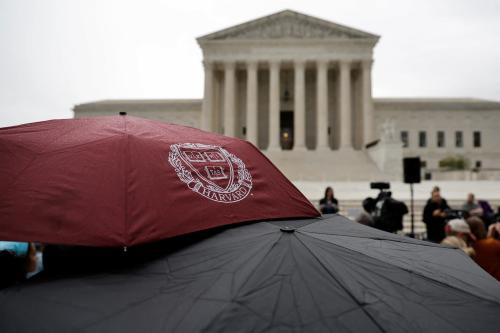
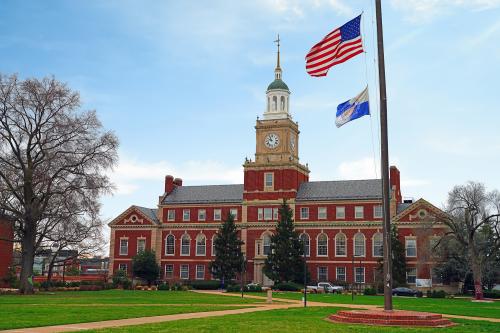
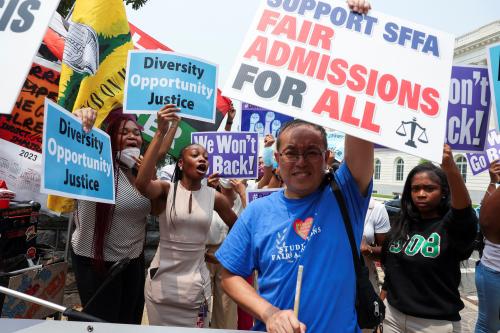


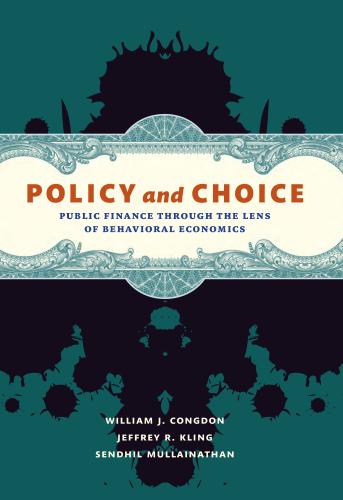

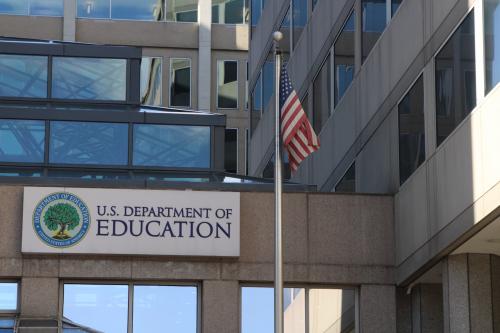
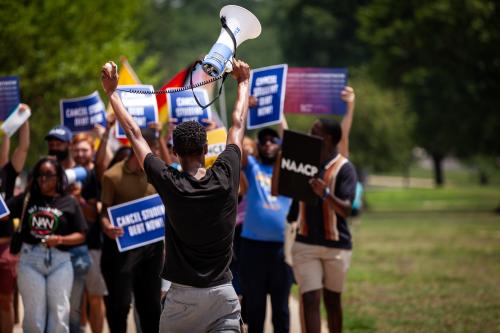
Commentary
What Should the Supreme Court Do About Affirmative Action?
May 20, 2013